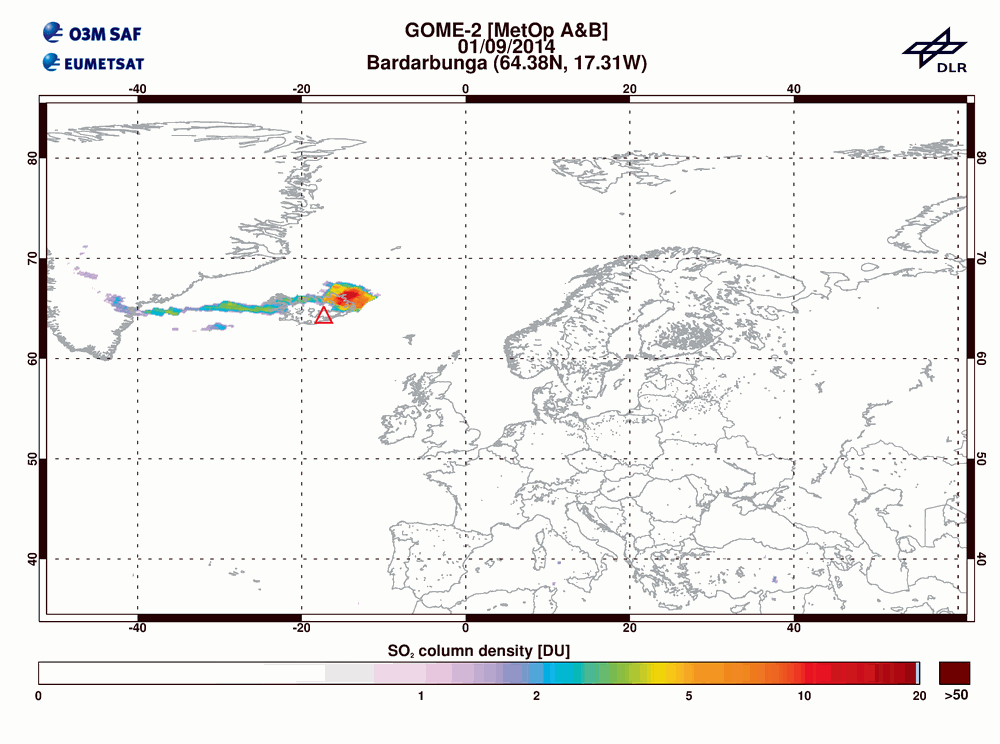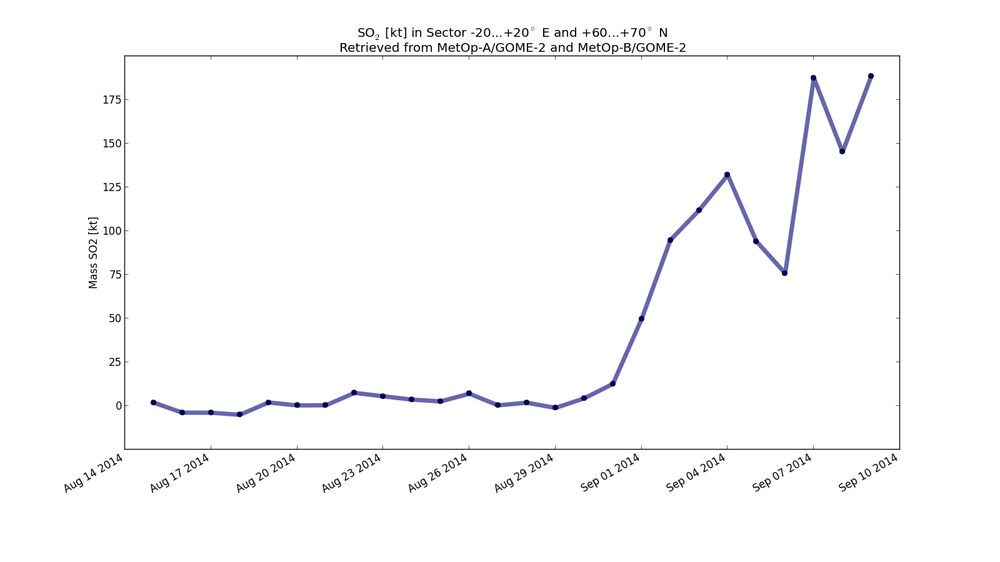Eruption of the Icelandic volcano Bardarbunga
After increased seismic activity in the past weeks, the Icelandic volcano Bardarbunga (Bárðarbunga) erupted on 1 September 2014. The Bardarbunga volcano is a stratovolcano located under the Vatnajökull glacier in a remote location. EOC is monitoring the emitted trace gases and their distribution in the atmosphere in near-real-time.
Since 1 September the GOME-2 instruments aboard the MetOp-A and –B satellites detect a continuous emission of sulphur-dioxide (SO2) with a plume first spreading over Greenland. After 2 September the SO2 plume was transported eastwards, even over central Russia. On 5 and 6 September a second SO2 plume was transported to the south-west over Ireland (see figure 1)

SO2 emissions are a good indicator for volcanic activity, since besides weak anthropogenic emissions there are no other known sources for atmospheric SO2. Figure 2 shows the timeseries of the SO2-mass as derived from GOME-2-observations over the North Atlantic.

The timeseries starts on 15th of August, corresponding to the onset of seismic activity in the Bardabunga area. Volcanic unrest started on 29th of August, although the detected SO2 mass in the atmosphere remained nearly unchanged. The drastic increase of the detected SO2 mass on 1st of September 2014 is caused by the Bardabunga eruption
Furthermore it was found that for some volcanic eruptions SO2 can be a good proxy for the much harder to detect volcanic ash. Volcanic ash can be hazardous not only for the local population but also for aviation since it can cause total engine failure if it melts and then congeals in the engine. Furthermore ash is highly abrasive to engine turbine vanes and propellers. SO2 itself can cause respiratory problems in the local population and the aircraft passengers. Furthermore in form of acid rain it increases the oxidation of aircraft components.
So far the Bardarbunga eruption is an effusive eruption with currently no volcanic ash emission being detected. Nevertheless the volcano remains active, and an explosive eruption is still possible, which will probably produce large amounts of volcanic ash and could affect the air traffic over Europe.
GOME-2 is an ultraviolet spectrometer (290-790 nm) aboard the polar-orbiting satellites MetOp-A (launched in 2006) and MetOp-B (launched in 2012) which takes global measurements of atmospheric composition on a daily basis. GOME-2 provides nadir-view scans with a ground pixel resolution of 40 x 40 km² (MetOp-A) and 80 x 40 km² (MetOp-B).
Under the leadership of IMF, DLR-EOC provides operational trace gas measurements, including total SO2 columns, in near-real-time (i.e., within 2 hours of recording) in the framework of EUMETSAT’s Satellite Application Facility on Ozone and Atmospheric Chemistry Monitoring (O3M-SAF). Users of the SO2 product include the Volcanic Ash Advisory Centres (VAACs), which issue aviation warnings.
More information about the trace gas products from GOME-2 can be accessed along with actual measurement results at the link.
